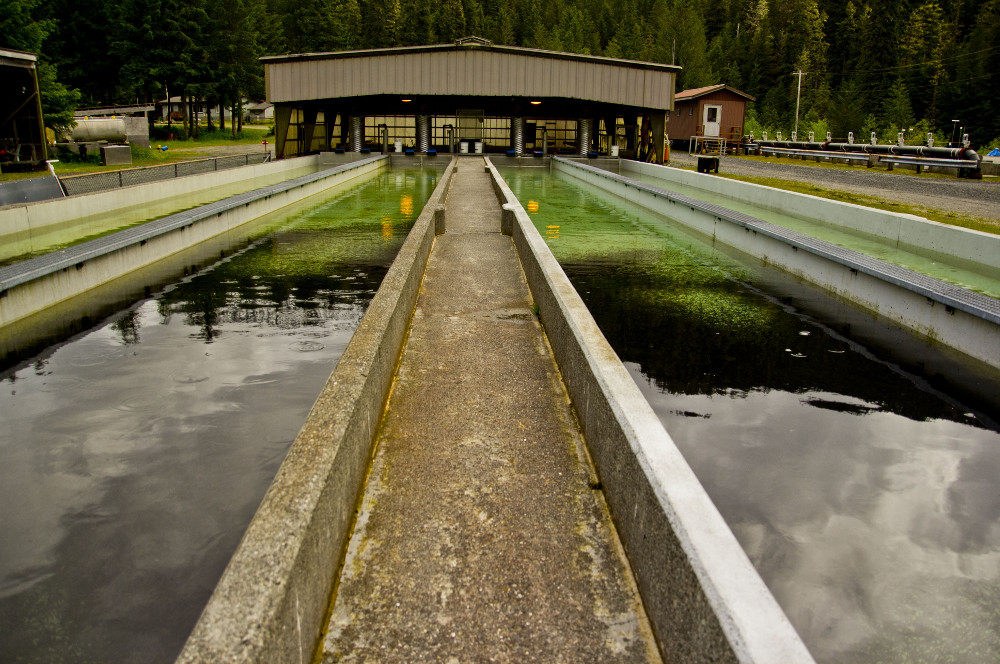
Both sport and commercial fishing interests are backing a bill to reestablish a surcharge on sportfishing licenses to pay for hatchery maintenance and some king salmon production in Southeast Alaska.
House bill 80 would reinstate an additional charge on state sportfishing licenses. It was initially established to pay back bonds used to build two sportfish hatcheries in Anchorage and Fairbanks. Revenue from it also funded hatchery king salmon production near Juneau and Petersburg. With that debt repaid, the surcharge ended in 2020.
The Dunleavy administration last year and this year proposed legislation to continue it, but at a lower level than the former amount. The money would be used for maintaining the state owned hatcheries and continuing to pay for hatchery kings in Southeast.
Ron Somerville with the Territorial Sportsmen in Juneau said the hatchery program is filling in for poor wild salmon returns to rivers near Juneau and Wrangell.
“Our king salmon fisheries in Southeastern have been abysmal,” Somerville said. “The Taku and Stikine (river) systems have been essentially closed for fishing in salt water for the last 6-7 years. Thus as a result of that our king salmon fishing is virtually gone except for what we get from the hatchery program supported by funds from the surcharge.”
In Southeast, the money paid for some of the chinook produced by Douglas Island Pink and Chum, or DIPAC, along with the state-owned Crystal Lake Hatchery south of Petersburg. DIPAC executive director Katie Harms explained the loss of around 300-thousand dollars would have an impact.
“Due to current financial uncertainty associated with poor salmon returns in Southeast Alaska, the DIPAC chinook program will likely be greatly reduced in the upcoming year if no surcharge licensing can be established this session,” Harms said.
The Southern Southeast Regional Aquaculture Association operates Crystal Lake near Petersburg and has discussed changing some of its king salmon releases if the surcharge is not reinstated.
The bill was amended in the House Fisheries committee to increase the surcharge amount by $2.50 on licenses for both residents and non-residents. That additional money would be used for fisheries management, research, invasive species management and habitat restoration.
Ben Mohr, executive director of the Kenai River Sportfishing Association, said his organization supported the bill as proposed by the governor, but not neccessarily the additional $2.50.
“Our understanding is these funds will be specifically used for operations and maintenance on the cost of sportfish hatcheries across the state,” Mohr said. “And that’s the critical portion of the bill in our opinion, that the funds generated from sportfish licenses stay with the users. It’s also the nature of our opposition to some of the language in the amendments, which essentially pour money into the department that are fairly vague on how and where that money will be used.”
The continuation of the surcharge has support from other sportfishing and commercial fishing industry groups. Susan Doherty of Ketchikan, executive director of the Southeast Alaska Seiners Association, said her organization supported the bill regardless of the final surcharge amount.
“The hundreds of millions of dollars in infrastructure in the three state sportfish hatcheries needs to be maintained and upgraded as appropriate,” Doherty said. “Additional revenue to Southeast to produce king salmon is also vitally important.”
It’s estimated the amended bill would generate around five and a half million dollars a year. It would boost the price of resident license by $6.50. A non-resident license would increase between $6.50 and $42.50.
The bill remains in the house finance committee for additional hearings. A companion bill also had a hearing before the Senate resources committee this week.









